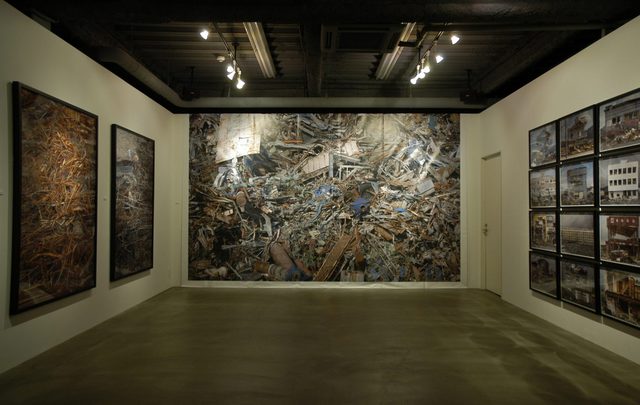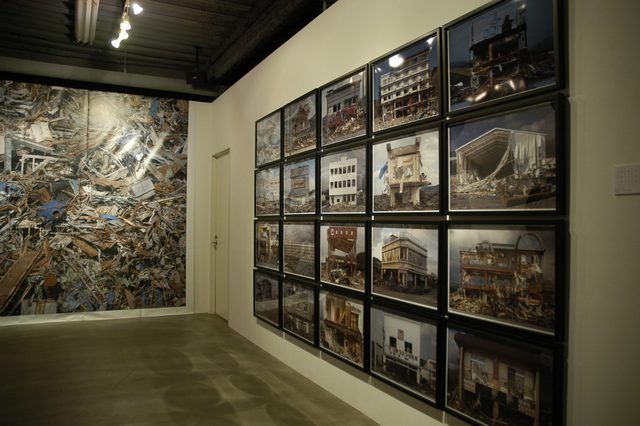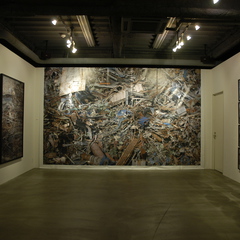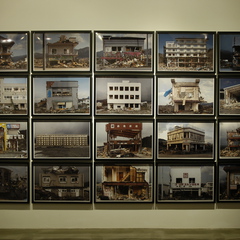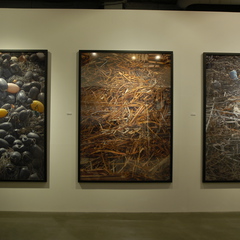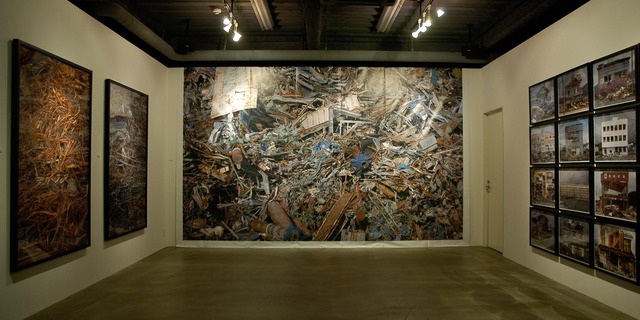
Main Gallery
LIFE
Hirohito Nomoto
2012.2.3. Fri-2012.2.25. Sat
A few weeks after the Tohoku earthquake, the artist, Hirohito Nomoto visited the disaster area where especially the biggest damage caused by Tsunami, and he started to work on the two photograph series, “Façade” and “Debris”.
Firstly, “Façade” means the front of the building or its design, especially used in architect terms. Nomoto has recorded the façade of residences, shops, schools, and sheds left after the Tsunami as if to shoot a brand new building by architect photographer. Using a special lens, the work captures to complete the face of each building that emphasizes the structure, function, and design, and also its situation of buildings can be observed.
For “Debris”, he chose the object for rubbles, was occurred and classified in the devastated area. The images were taken with high-quality digital equipment and he pasted them together on a computer as a patchwork and composed hundreds of million pixels to complete a single ultra-high-resolution image.
Then, printed on the big screen that can be seen almost as abstract paintings, with clearly you can see the details of every single rubble pile that reproduced in front of the audience an overwhelming amount of information by a large number of pixels.
Through the series, there is one common thing is that Nomoto’s view on the subject. He tried to keep away the “things” to see as an observer on this work. Eliminate the tragic aspects of the disaster dare to portray a detached only the physical facts. Then, instead of capturing the reality shows just as huge, he delved deeper into the individual details. Nomoto said that’s the best way to tell what really happened that day.
At this moment, most of the work subjects were removed and people have been moving to the new level to recover the area.
He presented such an emotional subject of “disaster site’s photograph” into universal art to show us the loss of our daily life by the disaster, need to be remembered forever.
Into the silent land
This is a daily life view in Osaka where he is from, however, the blue-grey image makes the audience feel that is a completely different world with silence.
Lines
He has recorded passing vessels on the Dojima River in Osaka every day.
This river has been supported the economy of this country, which completed its role after the Meiji Restoration (around the 1870s). By recording a certain number of seconds, he tries to reproduce the scenes of the past.
